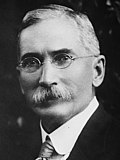This article needs additional citations for verification .(December 2009) |
| |||||||||||||||||||||||||||||||||||||||||||||
All 134 seats in the House of Assembly 68 seats needed for a majority | |||||||||||||||||||||||||||||||||||||||||||||
|---|---|---|---|---|---|---|---|---|---|---|---|---|---|---|---|---|---|---|---|---|---|---|---|---|---|---|---|---|---|---|---|---|---|---|---|---|---|---|---|---|---|---|---|---|---|
| Registered | 499,531 | ||||||||||||||||||||||||||||||||||||||||||||
| Turnout | 55.60% ( | ||||||||||||||||||||||||||||||||||||||||||||
| |||||||||||||||||||||||||||||||||||||||||||||
 Results by province | |||||||||||||||||||||||||||||||||||||||||||||
| |||||||||||||||||||||||||||||||||||||||||||||
| Part of a series on the |
| Politics of South Africa |
|---|
 |
General elections were held in South Africa on 8 February 1921 to elect the 134 members of the House of Assembly. [1] The South African Party, which since the previous election had fused with the Unionist Party, won an absolute majority.



